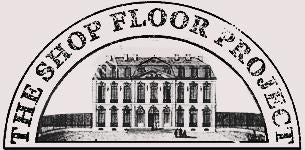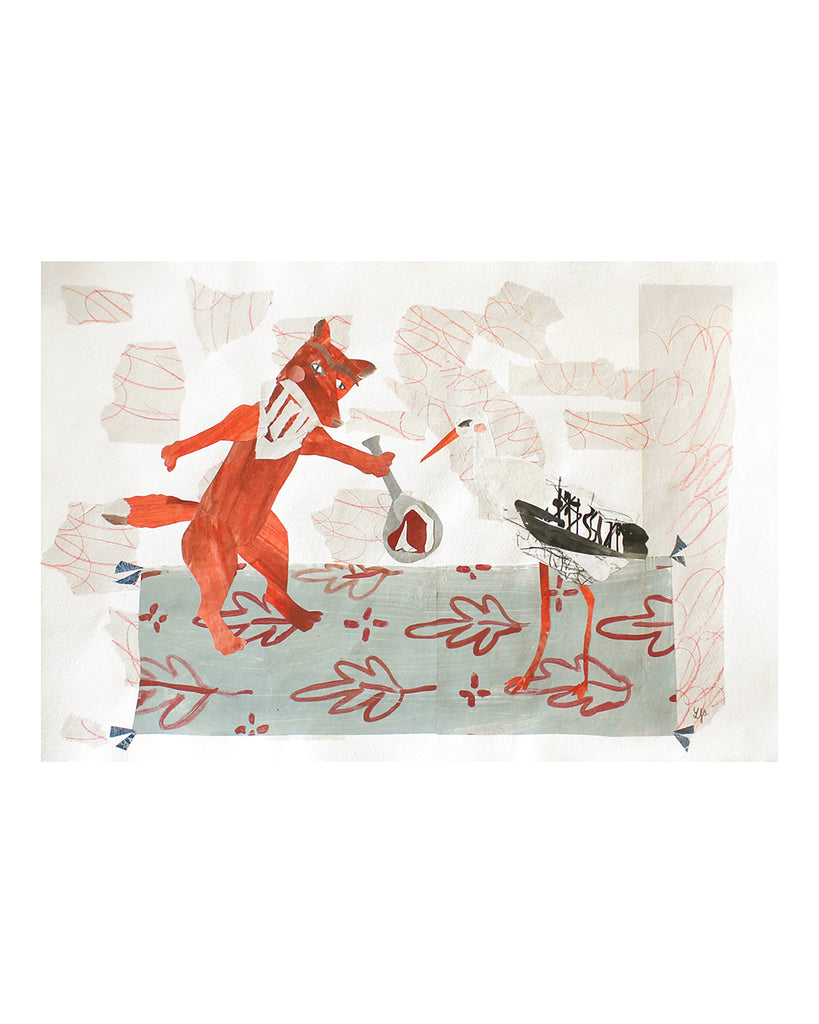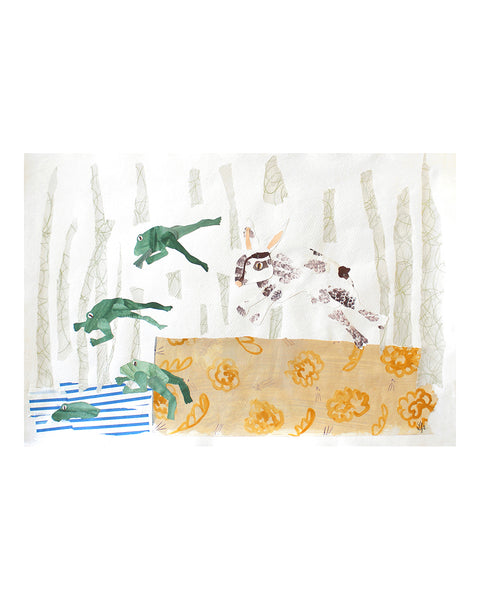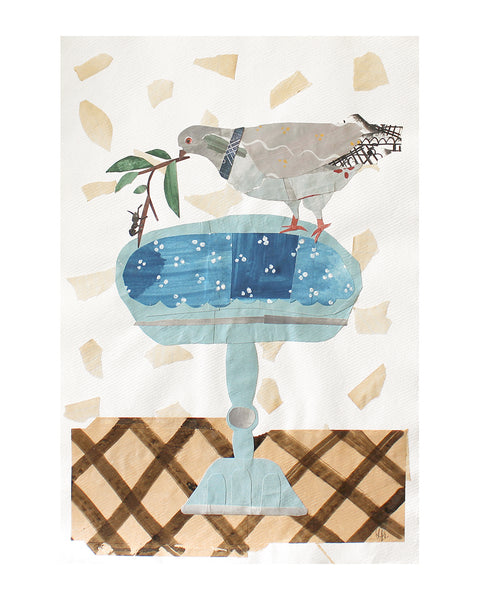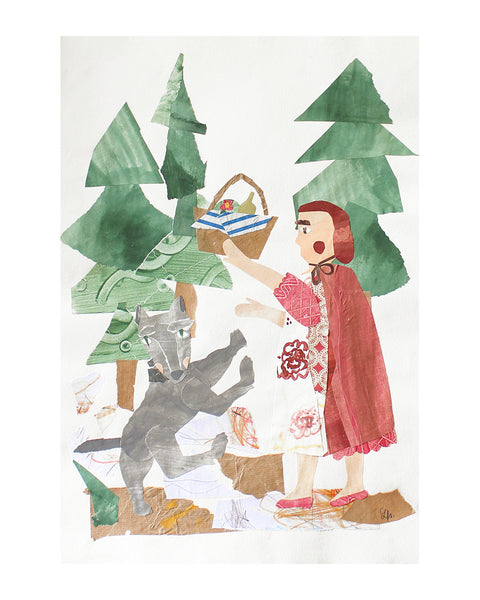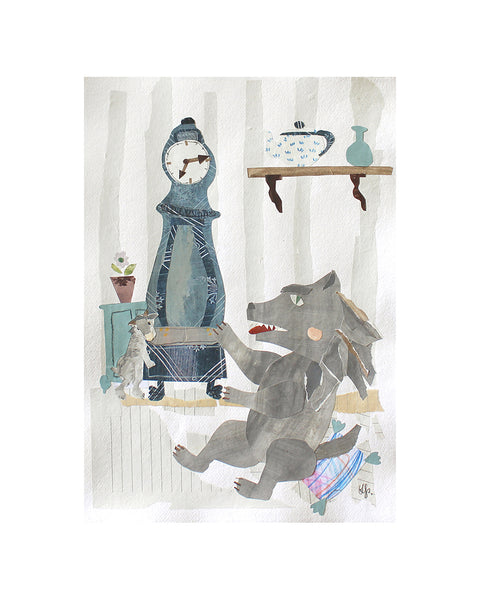
Product Details
Unframed artwork size approx: 54 x 36.5 cm (21.3” x 14.4”)
Framed size approx: 55 x 72.5 cm (21.7” x 28.5”)
Date of Artwork: April 2022
Location of Signature: Bottom Right
Frame options: Black Wood with mount, Ash with mount, White Wood with mount
Please note: Our framers are recognised by the Fine Art Trade Guild for their quality because the custom frames have tightly pinned corners, and are made from precision cut wood in England, made bespoke for each order. All our frames are glazed with our Clarity+ Perspex. It's cut from the highest quality acrylic sheet that's both crystal clear, but also safe and filters out 99% of UV light to protect the artwork.
Read more about our FRAMING WORKSHOP here
THE STORY OF THE FOX AND THE STORK
The Fox one day thought of a plan to amuse himself at the expense of the Stork, at whose odd appearance he was always laughing.
"You must come and dine with me today," he said to the Stork, smiling to himself at the trick he was going to play. The Stork gladly accepted the invitation and arrived in good time and with a very good appetite.
For dinner the Fox served soup. But it was set out in a very shallow dish, and all the Stork could do was to wet the very tip of his bill. Not a drop of soup could he get. But the Fox lapped it up easily, and, to increase the disappointment of the Stork, made a great show of enjoyment.
The hungry Stork was much displeased at the trick, but he was a calm, even-tempered fellow and saw no good in flying into a rage. Instead, not long afterward, he invited the Fox to dine with him in turn. The Fox arrived promptly at the time that had been set, and the Stork served a fish dinner that had a very appetising smell. But it was served in a tall jar with a very narrow neck. The Stork could easily get at the food with his long bill, but all the Fox could do was to lick the outside of the jar, and sniff at the delicious odour. And when the Fox lost his temper, the Stork said calmly:
Do not play tricks on your neighbours unless you can stand the same treatment yourself.
THE STORY
Once upon a time, in a studio located in a town in Germany, an artist who was surrounded by hand made props, painted papers, books and all manner of collected objects, created a series of original collages for The Shop Floor Project inspired by folktales and fables.
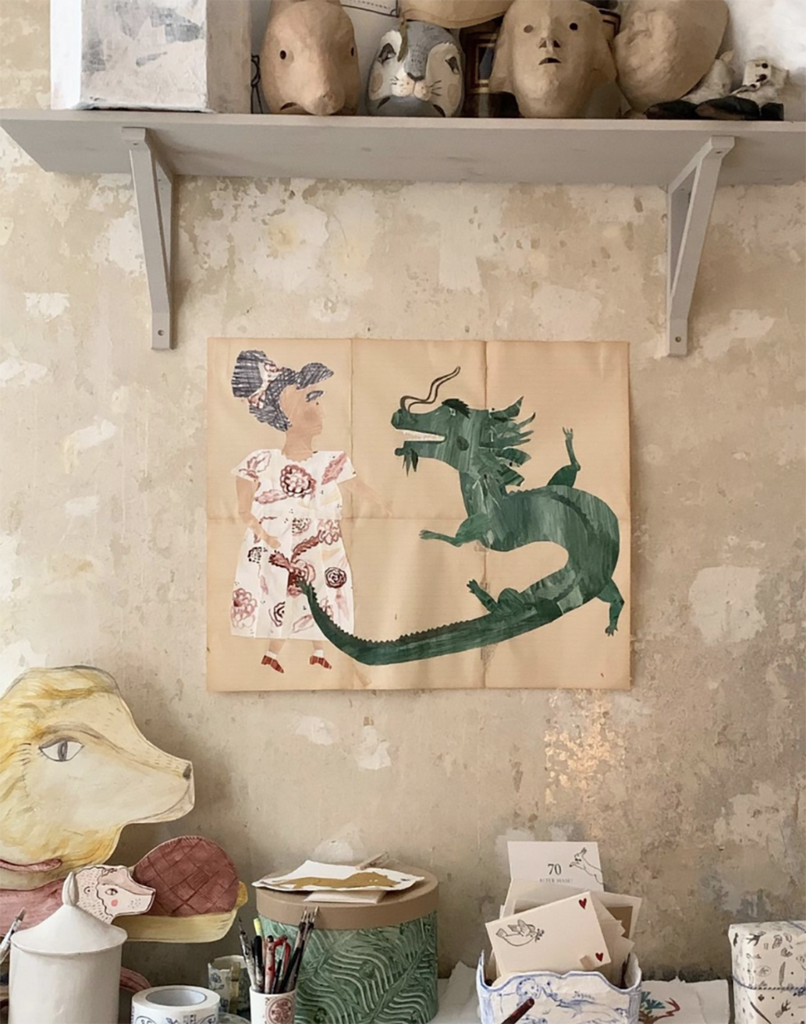
Lisa Sandner is an exciting new addition to The Shop Floor Project’s stable of artists and makers. Born in Frankfurt, Lisa describes herself as a nomad, spending much of her early life living all over the African continent, later exploring London and settling for some time in Paris where she completed a masters in Art History at the Sorbonne. Returning to Munster Germany, Lisa now dedicates her time to her studio working on all manner of projects, including this collection of Paper Parables.

Folktales are fragile and delicate things, emerging from the mists of time from ancient villages, forests and mountains, from every corner of the world. Preserved and passed on by the spoken word, every storyteller adds something of themselves each time the tale is told, through their individual interpretation of the story.

This fragility is something Lisa Sandner reflects beautifully in her work. Handmade collages in which fragments of paper seem to have been blown in from some distant land, on some ancient wind, landing on a piece of handmade paper to create a story, seemingly ready to blow away again at any moment.
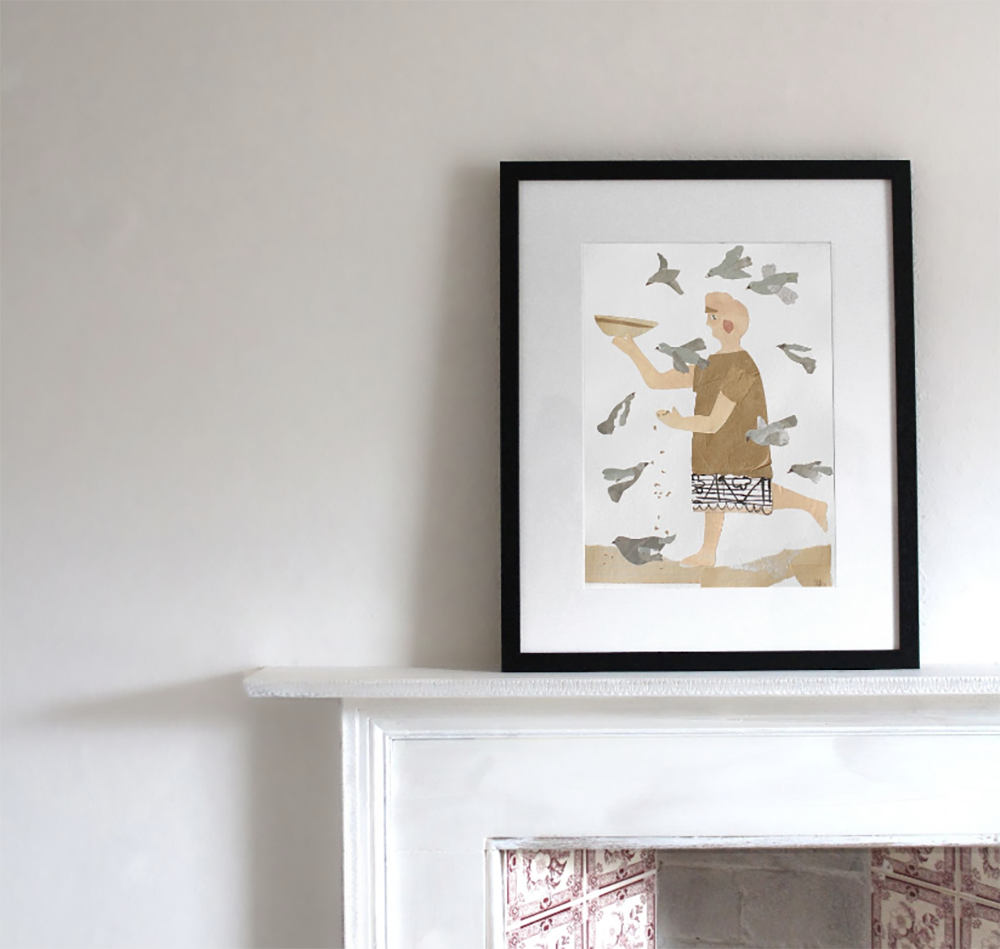
There is a real sophistication in Lisa Sandner’s work. Instilling character and life into paper figures and creatures that possess a childlike joy, which is often lost when adults stop reading story books, is no easy feat. Her work is joyful, playful and, just like the best folk tales, slightly odd. Her collages are like touch-papers for the imagination to run free.

As an art historian Lisa’s choice of materials reveals her love of things with history and the trace of the maker’s ‘hand’. Because she travelled so much as a child, she has been making artist collage books that were easily transportable since the age of eleven, filling them with collages and found ephemera... A magpie by nature, she is always on the hunt for objects to repurpose, a sensibility she attributes to her time in Africa: “Living in Africa taught me the power of my own hands, and the belief that everyone can be a maker. The idea that if you do not have it you can just make it was omnipresent when I grew up.”

Now living in Germany with all the materials she could want, Lisa continues to limit herself to materials she has in her studio. Called the Kabinett, Lisa’s studio is a cabinet of curiosities, filled with materials specific to her aesthetic, which she describes as a ‘very private place, where the imaginary playful world inside my imagination comes to life’.

‘The studio has old creaking floors, the smell of dried lavender and big shelves filled with old papier-mâché masks, flasks of ink, boxes full of paper flowers, antique textiles, materials and other artefacts that have a long tradition and story behind them. It is the magic of stories that lies between the sheets of paper or inside an old jar that I keep in my Kabinett.

The paper used for the collages are a calming mixture of fragments from found pieces to hand drawn and hand painted pieces. A craft Lisa often utilises is hand-patterned paper, a technique that dates back centuries and was popular in the 17th to 19th centuries for anything from bookbinding to wallpaper. Using much the same technique today, Lisa creates her own stock of interesting materials, inspired by historical patterns for use in her compositions.

The stories in the collages range from old favourites such as Red Riding Hood to Aesop’s Fables such as the Pigeon and the Ant; a little story about karma in which a pigeon stops an ant from drowning who then returns the favour by biting the pigeon to warn of an approaching huntsman.

Imagining Lisa working away on this collection, below the ancient gabled rooftops of her German town, in her ancient studio is like something from a fairytale itself. Lisa says she prefers silence to music as she works, often opening windows to listen to the birds and the wind outside - perhaps these works really did blow in on an ancient breeze after all.
